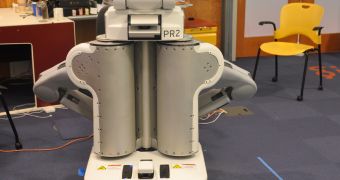A group of robotics experts at the Massachusetts Institute of Technology (MIT) announces the creation of a continuous mapping system, which enables robots to first construct, and then constantly update, a map of their surroundings.
What this implies is that future generations of robots may be able to move around autonomously, without input or directions from human operators. Having a map of their location available for reference is critical for avoiding obstacles in their paths, for example.
One of the most significant achievements made in this research is the fact that the entire technique the MIT team developed is made possible by low-cost cameras. The experts, for example, used a Kinect controller, which is sold by Microsoft with one of its gaming consoles.
The group, based at the Institute's Computer Science and Artificial Intelligence Laboratory (CSAIL), say that their technique could also be used by blind people. Various devices based on this technology could be used to navigate crowded environments, such as streets and malls.
CSAIL research scientist Maurice Fallon says that there is currently an important drive in robotics science to create machines capable of mapping their surroundings at all times. Predefined maps are useful to some extent, but robots cannot readily adapt to new realities in the field.
“If you see objects that were not there previously, it is difficult for a robot to incorporate that into its map,” Fallon explains. The new approach enables the machines to create a map of everything around them, and then continuously update it as the position of objects and people changes.
The expert is developing the new system with MIT professor of mechanical and ocean engineering John J. Leonard, and graduate student Hordur Johannsson. The technique underlying the system is called Simultaneous Localization and Mapping (SLAM).
A paper on how the mapping method functions will be presented in May, at the International Conference on Robotics and Automation, which will be held in St. Paul, Minnesota.
If we are to employ robotic assistants in any type of service, we first have to ensure that they can take care of themselves. A doctor, for example, has more important things to do than ensure that a robotic assistant can navigate the crowded corridors of hospitals.
“This opens up exciting new possibilities in robot research and engineering, as the old-school ‘flatland’ assumption that the scientific community has been using for many years is fundamentally flawed,” Willow Garage research scientist Radu Rusu adds. He was not a part of the investigation.
“Robots that fly or navigate in environments with stairs, ramps and all sorts of other indoor architectural elements are getting one step closer to actually doing something useful. And it all starts with being able to navigate,” Rusu concludes.

 14 DAY TRIAL //
14 DAY TRIAL //